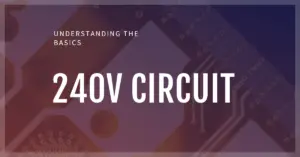Electricity is an essential part of our lives, powering our homes and enabling the functionality of numerous appliances and devices.
However, it’s crucial to understand the importance of correct electrical wiring, specifically the proper orientation of live and neutral wires.
When live and neutral wires are reversed, it compromises electrical safety and can lead to hazards such as electric shocks and fire.
In this article, we will explore the significance of maintaining the correct polarity and the potential consequences of reversing live and neutral wires.
Understanding Live and Neutral Wires
Live and neutral wires are fundamental components of electrical systems. The live wire carries the electrical current from the power source to the appliances, while the neutral wire provides a safe return path for the current.
Reversing these wires can have significant implications for electrical circuits and equipment. It’s important to comprehend the electrical characteristics of live and neutral wires and their intended functions.
Consequences of Reversing Live and Neutral
Reversing live and neutral wires can lead to a range of issues that compromise electrical safety and equipment functionality.
Electric shock risks increase significantly, as reversing the wires may result in energized surfaces or exposed conductive parts.
Additionally, fire hazards become a concern due to potential overheating or short circuits caused by the reversed polarity.
Potential Issues with Reversed Live and Neutral
Electrical safety hazards are a primary concern when live and neutral wires are reversed. The risk of electric shock rises when touching metal parts of appliances or electrical outlets, as they may become unexpectedly energized.
Furthermore, the chances of electrical fires increase due to the potential for excessive heat generated by appliances or wiring.
Reversing live and neutral wires can also cause equipment malfunction and damage. Appliances may experience irregular performance, reduced lifespan, or even complete failure.
Electronic devices, in particular, are susceptible to damage, as they often rely on sensitive circuitry that can be adversely affected by reversed polarity.
Electrical Code Requirements
To ensure electrical safety, international electrical standards mandate the correct polarity of live and neutral wires.
These standards are incorporated into electrical codes and regulations, which govern electrical installations. Failure to comply with these requirements can lead to code violations and legal consequences.
Identifying Reversed Live and Neutral
Identifying reversed live and neutral wires is crucial for rectifying the issue. Visual inspection of electrical outlets can provide initial clues, such as reversed wiring indicators on the outlet faceplate.
However, for accurate identification, it’s advisable to use a polarity tester, a device specifically designed to detect reversed polarity. If unsure, seeking assistance from a licensed electrician is recommended.
Correcting Reversed Live and Neutral
Correcting the reversal of live and neutral wires should be a priority to maintain electrical safety and equipment functionality.
Homeowners can attempt to rectify the issue themselves, following proper DIY methods. However, it’s essential to exercise caution and ensure adequate knowledge and skill.
Hiring a licensed electrician is generally the safer and more reliable option for correcting reversed polarity, as they possess the necessary expertise.
Precautions and Safety Measures
Adopting safe practices is essential for homeowners to minimize electrical hazards. Regular electrical inspections by professionals can identify any wiring issues, including reversed live and neutral wires.
It’s also important to prioritize regular maintenance, ensuring that electrical systems remain in optimal condition and reducing the risk of accidents or malfunctions.
Conclusion
Maintaining the correct orientation of live and neutral wires is of utmost importance in electrical installations.
Reversing these wires can result in severe consequences, including electrical safety hazards and equipment damage.
By understanding the significance of proper electrical polarity, identifying reversed wiring, and taking appropriate corrective measures, homeowners can ensure a safe and functional electrical system in their homes.

